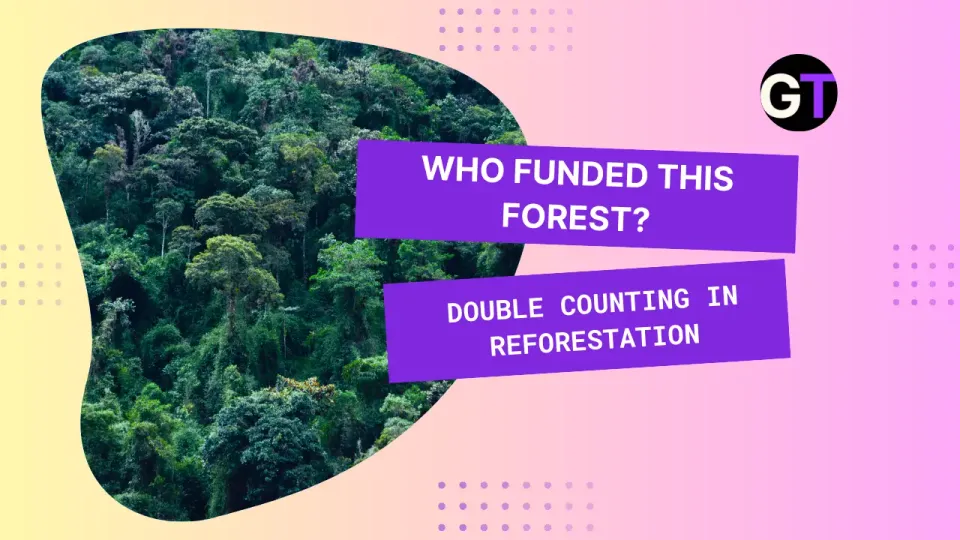Sahel's Green Revolution: Local Farmers Strike Back 🌱🌍
This study reveals how, with the right tools, data, and knowledge, we can rewrite the future of food security and climate resilience in the Sahel. 🌱

Introduction
The Sahel, a region often associated with harsh droughts and struggling agriculture, is experiencing a quiet yet powerful transformation. Through a mix of local farming techniques and improved rainfall, this once-dry region is regreening according to Descroix et. al. (2024). But what’s truly inspiring is that this shift is being driven by small-scale farmers and local communities. This study reveals how, with the right tools, data, and knowledge, we can rewrite the future of food security and climate resilience in the Sahel. 🌱
🌳 Could expanding agroforestry help combat desertification in other parts of the world? What’s your take on this?
Why It’s Not Just Nature: Farmers Lead the Way 🌾
For decades, drought and desertification were the norm in the Sahel. But something amazing is happening — vegetation is making a comeback. 🌿 Thanks to techniques like agroforestry and zai holes, farmers are transforming the landscape. 🌍
Zai holes, a traditional method of digging small pits to capture rainwater and improve soil fertility, have been a game-changer in the region. 🌧️ Combined with agroforestry — the integration of trees and crops — these methods are helping communities grow food where it once seemed impossible.
Rainfall has also increased, reaching levels not seen since the 1950s, further helping to restore the land. But it's not just the rain; it’s the innovation and resilience of local farmers that have brought about this change.
💡 How do you think traditional farming methods can influence modern agriculture elsewhere in the world? Share your thoughts below!
What’s Driving This Green Revolution? 🌦️
Farmers are at the heart of this transformation. Here’s how they’re doing it:
- Zai Holes for Water Retention: These small holes capture rainwater, allowing it to seep into the ground rather than run off. The extra moisture improves soil health and helps crops grow, even during dry periods. 🌾
- Agroforestry: By planting trees alongside crops, farmers are boosting yields and restoring the environment. Trees help to improve soil structure, provide shade, and reduce water evaporation, making them key to this regreening movement. 🌳
- Community Knowledge: Local communities have been at the forefront, adapting these methods and passing down knowledge across generations. It’s proof that sustainable farming doesn’t always need high-tech solutions — sometimes it’s about smart use of traditional practices. 💧
📱 How do you think better access to data could help farmers overcome climate challenges? Let’s discuss in the comments!

Backing It Up with Data 🔍
The regreening of the Sahel isn’t just anecdotal — it's backed by solid data. 📊 The study highlights the use of FAOSTAT, a comprehensive database from the Food and Agriculture Organization (FAO), to track agricultural production and trends in the region. Open data from FAOSTAT allows farmers, researchers, and policymakers to monitor food production, rainfall patterns, and land use in real time.
This data is central to evaluating the evolution of crop yields for key staples like cassava, maize, millet, and rice. The tripling of production, despite challenges, is supported by these statistics, indicating an increase in food self-sufficiency and resilience in the region.
What’s needed next?
- Scaling Agroforestry: We need to expand tree-planting programs, especially in regions where soil health is declining. Agroforestry can significantly increase water retention and provide long-term food security.
- Improving Soil Health with Zai Holes: Continued investment in soil restoration is essential. Zai holes have already proven their worth, but wider adoption is key to making them a region-wide solution.
- Supporting Farmers with Data: Farmers need access to real-time information about soil conditions, rainfall, and crop performance. FAOSTAT and other open-source tools offer valuable insights to help guide these decisions.
📊 Do you believe open data could transform farming practices in other regions too? Let us know how!
Open Data Is Key 🌍
Open data is crucial to backing the claims of Descroix et. al. and keeping this momentum alive. The study leverages FAOSTAT to analyze trends in food production and land use. This open data is essential not just for researchers but also for local farmers, who can use it to make informed decisions about what to plant and when. 🌐 The free access to this data means everyone can contribute to the region’s success story — from policymakers to farmers on the ground.
Study Cited📖
Descroix L, Luxereau A, Lambert LA, Ruë O, Diedhiou A, Diongue-Niang A, Dia AH, Gangneron F, Manga SP, Diedhiou AB, et al. An Interdisciplinary Approach to Understand the Resilience of Agrosystems in the Sahel and West Africa. Sustainability. 2024; 16(13):5555. https://doi.org/10.3390/su16135555
Author Socials📇
Luc Descroix ORCID | Luc Descroix SciProfiles
Anne Luxereau SciProfiles
Laurent A. Lambert ORCID | Laurent A. Lambert ResearchGate | Laurent A. Lambert SciProfiles
Olivier Ruë SciProfiles
Arona Diedhiou ORCID | Arona Diedhiou ResearchGate | Arona Diedhiou SciProfiles
Aïda Diongue-Niang SciProfiles
Amadou Hamath Dia SciProfiles
Fabrice Gangneron ORCID | Fabrice Gangneron SciProfiles
Sylvie Paméla Manga SciProfiles
Ange B. Diedhiou ORCID | Ange B. Diedhiou SciProfiles
Julien Andrieu SciProfiles
Patrick Chevalier SciProfiles
Bakary Faty SciProfiles




